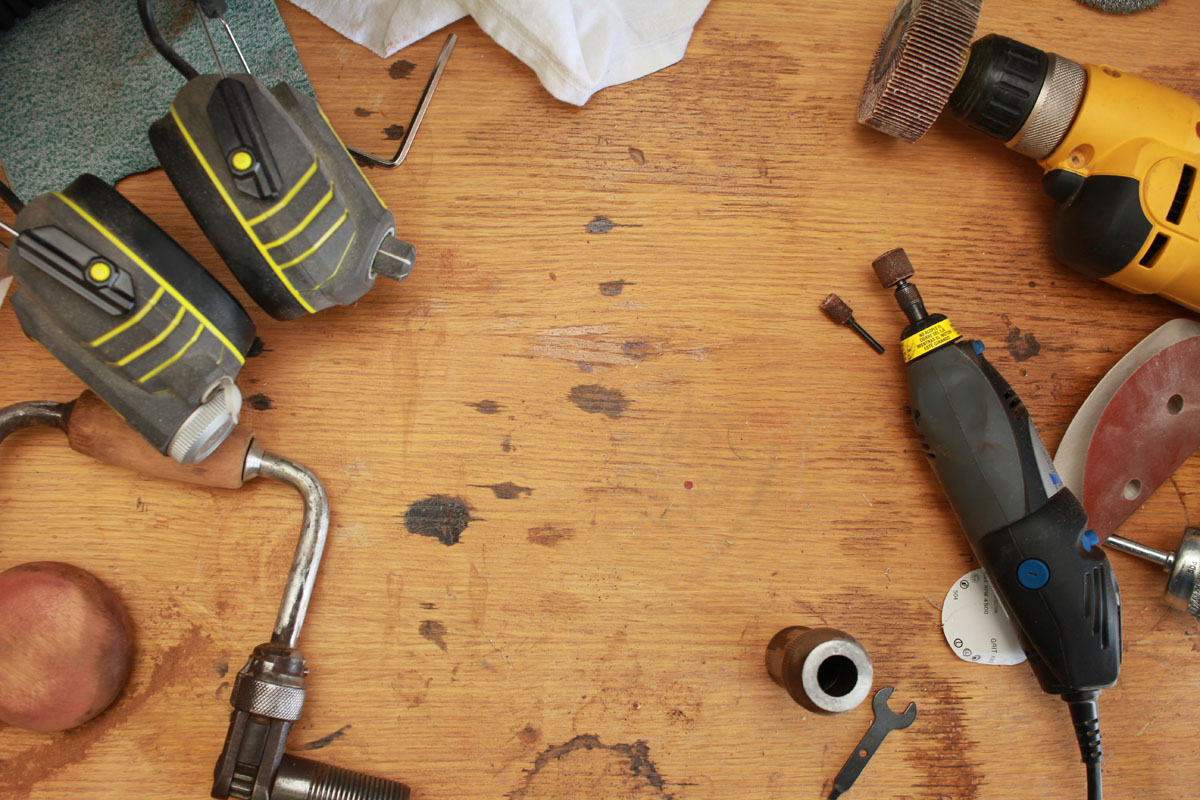Krazy Glue is a household favorite. It’s quick and easy to use for minor repairs around the home, and you can use it on almost anything. But what exactly does it work on?
Krazy Glue works on wood, metal, glass, some fabrics, most plastics, and other materials. It’s a fast-acting adhesive and bonds almost anything, making it a popular option for household repairs. Before applying the glue, clean the surface or it won’t bond, and use acetone if it gets on your skin.
The rest of this article will discuss more in-depth what material Krazy Glue works on and doesn’t work on. Throughout this article, you’ll also learn the following:
- What Krazy Glue is made of
- How long it takes Krazy Glue to bond
- The different types of Krazy Glue and which work best on certain materials
- The best way to apply Krazy Glue
- If Krazy Glue is permanent
What Material Does Krazy Glue Bond?
Krazy Glue advertises its adhesive as a glue that you can use to bond almost anything. However, as it’s not advertised to bond to everything, many wonder what it actually works on, how to know what household items you can use it on, and what things you shouldn’t waste the product on.
There are also different types of Krazy Glue for specific uses, some of which I’ll discuss below, along with finding out if Krazy Glue works on common materials.
Does It Work on Wood?
Krazy Glue has a specific glue for wood, called the Krazy Glue Fast Dry Wood Glue (available on Amazon.com, which is fast-drying, setting in just six minutes. As it’s made only for wood, it’s the best option to use when bonding wood materials.
This glue adheres to many different wood types, including the following:
- Pine
- Maple
- Cherry
- Oak
- Hickory
- Beech
Does It Work on Metal?
Krazy Glue is an excellent choice to bond metals. The Krazy Glue All Purpose and Krazy Glue Max Bond Gel (both on Amazon.com) are adhesives that bond to many different materials. Using just a drop of both will create a robust and long-lasting bond with many metals.
Does It Work on Glass?
Krazy Glue’s All Purpose Glue is the best option when bonding glass, as it’s the only type of Krazy Glue specifically advertised to bond with the glass. Therefore, you can use Krazy Glue on mirrors, glass tables, or other glass objects that you need to repair around the house or that you want to bond together.
Does It Work on Fabric?
Krazy Glue works well on some fabrics and not so well on others. For example, using Krazy Glue’s All-Purpose adhesive on felt will work well as it’s typically a thick fabric.
However, using Krazy Glue on thin fabrics, such as cotton, can cause an extreme heat reaction. Therefore, using it on fabrics such as jeans, cotton shirts, or any other cotton material can cause burns and should be avoided.
Does It Work on Plastic?
While Krazy Glue doesn’t bond to every plastic, which I’ll discuss next, it does bond to most plastics. Krazy Glue recommends using the All-Purpose glue with plastics to get the best possible bond.
It works on Polystyrene plastics, such as plastic cutlery and takeout containers, and PVC plastics, which companies commonly use to make things such as bottles or bank cards.
What Plastics Does Krazy Glue Not Work On?
Krazy Glue doesn’t work on certain plastics. For example, Ít doesn’t bond to High-Density Polyethylene plastics (HDPE) or Low-Density Polyethylene plastics (LDPE).
HDPE plastics are commonly seen in soap containers, freezer bags, or bottle caps, while LDPE plastics are widely seen in objects like containers, laundry bags, and drink cartons.
What Other Materials Does Krazy Glue Not Bond?
There are a few other materials that Krazy Glue doesn’t bond to, one of which is Teflon, or Polytetrafluoroethylene (PTFE). Many people use PTFE as a non-stick coating for pans when cooking. However, because of the components that make up Teflon, or PTFE, it doesn’t work as an easy bonding agent with Krazy Glue.
Krazy Glue also recommends not to use it on paper, rear-view mirrors, or foam as these materials might not give you the best bonding results.
What Is Krazy Glue Made Of?
Krazy Glue has one main ingredient: cyanoacrylates. Harry Coover initially discovered it in hopes of using it for the second world war. However, it was rejected for wartime application and rediscovered and sold for commercial purposes in 1958.
Cyanoacrylates then became the strong adhesive we know today. It’s used as an active ingredient in many commercial adhesives, including Super Glue, Gorilla Super Glue, and of course, Krazy Glue. That’s why many of these glues have similar properties.
How Long Does It Take Krazy Glue To Bond?
Krazy Glue, like other cyanoacrylate glues, is known for its fast-drying and powerful adhesive properties. The brand might say it’s fast-drying, but how long does it actually take?
It takes 10 to 60 seconds for Krazy Glue to begin to bond on most materials. So, holding the material in place for about two minutes will ensure that it has completely bonded. However, the wood glues take around two to six minutes to begin bonding on many wood types.
To get the fastest bond from Krazy Glue, you must be using the best glue for what you’re bonding. For instance, if you’re using regular Krazy Glue instead of the Fast Dry Wood Glue on wood, you most likely won’t see any bonding.
How Should I Apply Krazy Glue?
It would be best if you took precautions when applying Krazy Glue, no matter what material you’re going to be using it on. As it’s a powerful adhesive, getting it on anything you didn’t mean to, such as a countertop or even your skin, is going to be a pain to get off. That’s why you should always wear protective gloves or clothes before using Krazy Glue.
Before applying the glue, make sure you clean the surface, and ensure there’s no dirt or oil, as Krazy Glue bonds at a molecular level. Trying to use it on a dirty surface will prevent it from bonding. The surface should be clean and completely dry for the best results.
If you’re using Krazy Glue on wood, Krazy Glue recommends that it be sanded or planed flat before using the adhesive on it.
After preparing the surface, apply the Krazy Glue sparingly. A little goes a long way which is the great thing about Krazy Glue; one drop can hold more than 1000 lbs (454 kgs). Therefore, using too much of it can cause the glue not to bond as it should.
Is Krazy Glue Permanent?
While many people fear that getting Krazy Glue on your skin or an object you didn’t intend to get it on means the glue will be stuck there forever, that’s usually not the case. While Krazy Glue is supposed to be strong, there are ways to remove it if it’s needed.
Krazy Glue is made to be permanent. For that reason, the bonded materials should never break apart if it’s bonded correctly. However, Krazy Glue will begin to do so if it’s exposed to acetone, as it’s a solvent used to break a cyanoacrylate bond.
Therefore, if you accidentally glue your skin, you can remove the Krazy Glue painlessly. Krazy Glue recommends soaking acetone or just regular nail polish remover on the area until the bond breaks and then rinsing thoroughly with water.
Final Thoughts
Krazy Glue bonds almost everything, just as it’s advertised. The different types of Krazy Glue offer a more extensive range of bonding opportunities, making it more versatile than many other brands. It bonds wood, metal, glass, some fabrics, and most plastics quickly and efficiently.
It would be best always to take precautions when using Krazy Glue, as it’s a powerful adhesive. However, if you get it on your skin or another surface on accident, soaking the area with acetone will break apart the bond.

